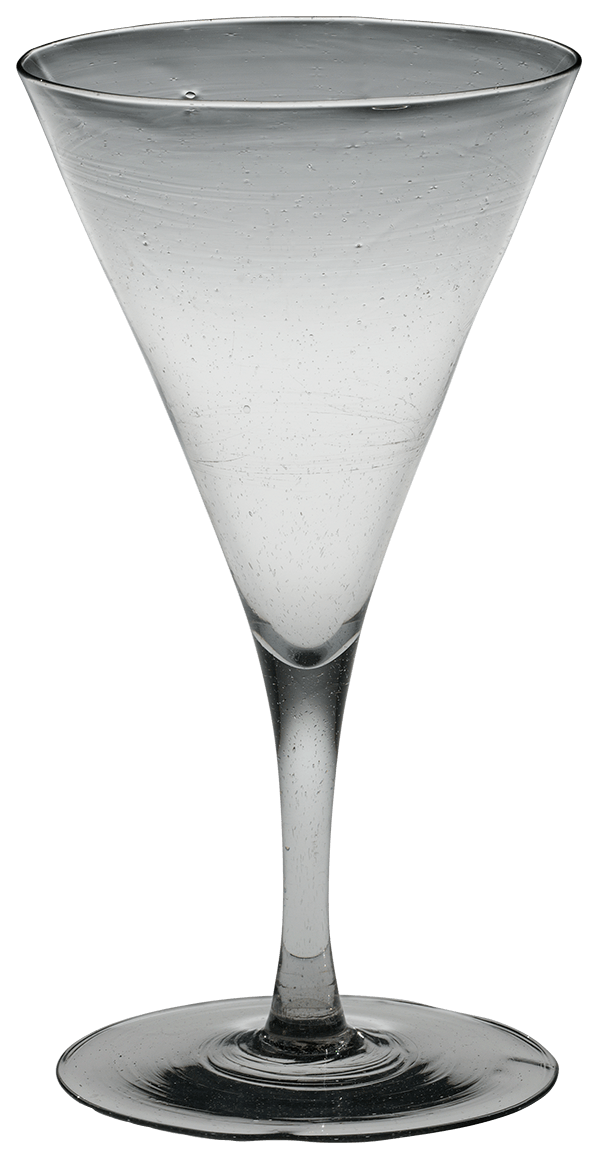French pulled-stem wineglass
French Pulled Stem Wineglass
The video shows a cylindrical gather of glass on the end of a blowpipe being partly inflated. A constriction is then made near the tip of the glass and the stem is begun by pulling outward on the constriction with a tool. The glass is further inflated and elongated to form both the vessel and the stem. After a foot is added, the vessel is transferred to a pontil and the rim is finished.
Transcript
Because one gather of glass will be used for both the cup and the stem, it has to be a substantial amount of glass. The glass is marvered to elongate the mass, a bubble is blown in but only about a third of the way out the length of the cylinder of glass. A broad constriction is made near the outer portion. It's forced cooled with air from the soffietta and, after reheating, the glass is inflated using the rubber blow hose while the end is pulled. A constriction has begun near the blowpipe. Blowing continues, pulling continues. The neck or constriction near the blowpipe is refined in shape and made narrow. The lower portion of the bowl is cooled and, after a reheat, the stem pulled to its final shape and diameter. The excess glass on the end of the ball is knocked free.
The end of the stem is made flat and a second bubble is lowered on to the tip of the stem. This will become the foot. Keeping the bubble centered carefully, the tip is pulled, a constriction is made. The constriction is held with the diamond shears, the tip broken free, leaving a hole. After reheating, the jacks are used to open the hole to a diameter of about an inch and, during the reheating, the stem unavoidably heats and becomes soft. The soffietta is used to force cool the lower part of the stem.
The foot is given its final shallow profile. It's made straight and flat. The punty, or pontil, is attached to the base. The neck is broken and the punty will be used as a handle which will allow the reheating of the open end and the shaping with the jacks and the soffietta.
First, the end is thinned. Excess glass is pulled outward, thus thinning the lip and the excess glass is knocked free. And then, with a series of reheats, tooling with the jacks, and inflating with the soffietta, the vessel is given its final conical profile. The vessel is lowered into the annealer, the punty tapped with the pincers, and the wineglass left in the annealer for slow cooling.
See all: Browse by Map


